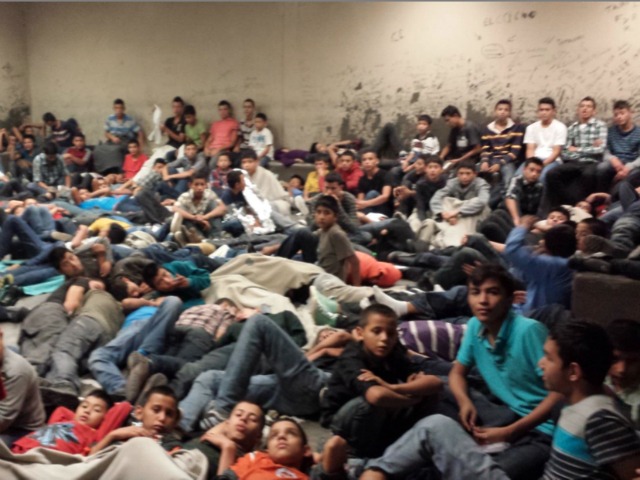Forty-seven thousand children have entered the United States illegally since last October, and the media were finally given access to see how some of them are housed in U.S. Border Patrol stations in South Texas and Arizona.
Most of the children are from Central America, and the law requires that once they are taken to the Border Patrol stations, they are to be moved to the Department of Health and Human Services within three days.
Upon arriving at the Department of Health and Human Services, these children are moved to shelters for weeks until the government can find their families in the U.S. The roughly 100 shelters around the nation are overfull, with over 7,600 children already waiting there.
Many of the children sleep with “aluminum-foil-like blankets,” some of them sleeping on concrete floors. Clean bluejeans, T-shirts, and toiletries were provided on some tables.
In Nogales, Arizona, approximately 1,000 children were piled into the 120,000-square-foot warehouse, where the World Cup was displayed on an HD television. Fifteen-foot chain link fences with barbed wire at the top separated the children into groups by their age and sex.
When FEMA found that the children were not eating the burritos provided to them because they didn’t like flour tortillas, the agency renegotiated its contract with a food vendor so they could have corn tortillas, instead. The children receive three meals a day in the 200-seat dining area.
The media were neither allowed to interact with the children nor converse with the employees of the shelters.

COMMENTS
Please let us know if you're having issues with commenting.